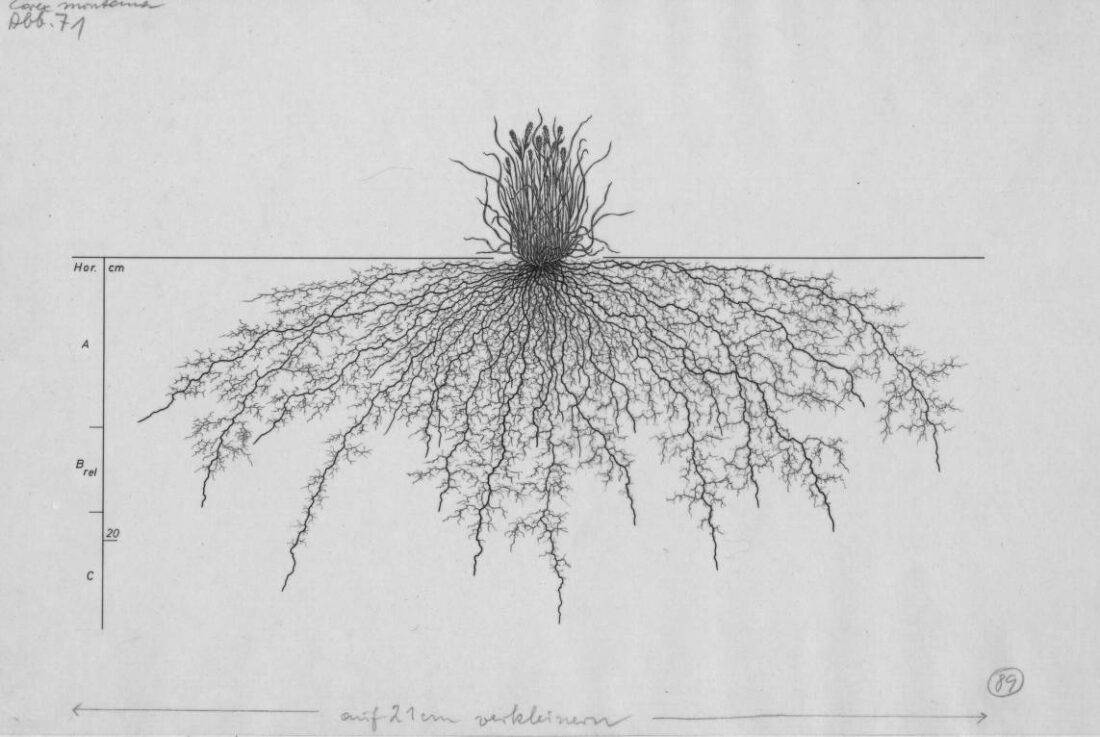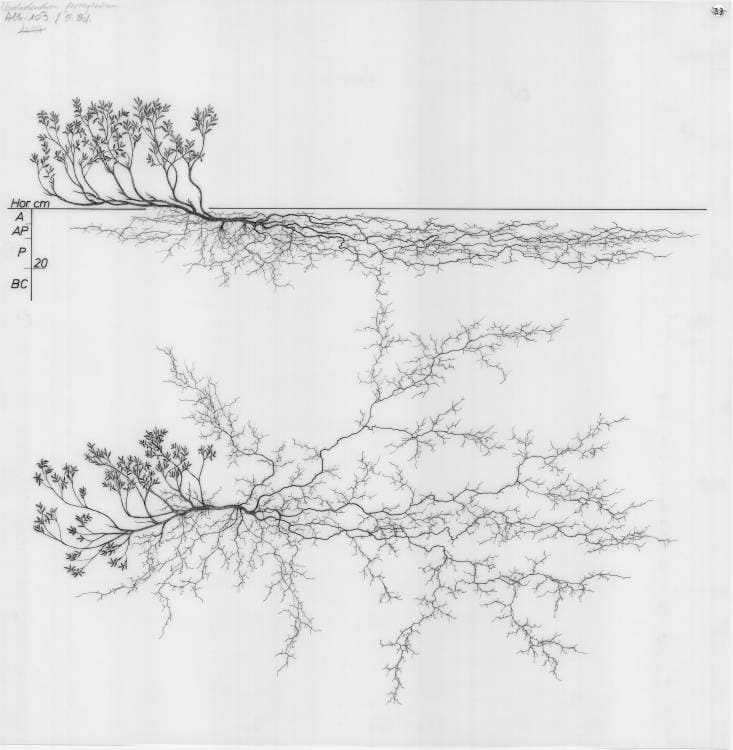As you increase your knowledge of naturalistic planting, using natives in garden design, Matrix planting, and creating plant communities that function better than plant groupings based only on their above-ground visual characteristics, I suspect you will need more information than you can typically get in a basic internet search. You’ll need information about Eco Regions, the root systems of plants, and a database of connections between plants at the fauna they interact with (at the very least).
The fact is, there is as much to consider about a plant. What it looks like and does below ground and in the dirt is as important as what it does above ground. I don’t know how I might use a root map of a plant (yet), but I am happy that I have found a library full of them. If you are exploring this same area – you might also find this website useful.
See over 1100 plant root maps at the Wagenigen University and Research Image Collection.
Examples of Root system maps of plants you might use in your garden:


The root structure library is large, with over a thousand root map images of plants, but it is far from comprehensive. It is, however, worth perusing because even a beginner’s awareness of the variety is valuable. You immediately get a better idea of why a plant works better in some areas than others and what a plant may or may not be able to achieve in a given set of conditions.
Rhododendrons, Carex, and Cornus sanguinea are all native to New England, and I am fascinated to see their vastly different root structures. They are providing some insight I didn’t previously have.

Late last fall, we had to dig a trench through the woods adjacent to our house to install electrical lines for a new solar electric system. We didn’t upend any of the understory rhododendrons that grow in this area of our property, but we did have to dig near them, and many roots were severed.
I’ve since noticed what appears to be a drooping of the branches of a particularly large rhododendron shrub that faced our house. I am not sure if this is something I am imagining or if maybe it is seasonal – but it has caught my eye. I am now wondering if our trench may have damaged the far-reaching roots that these shrubs establish (I am certain that it did) and if perhaps this is the cause of the droop.
+comments+